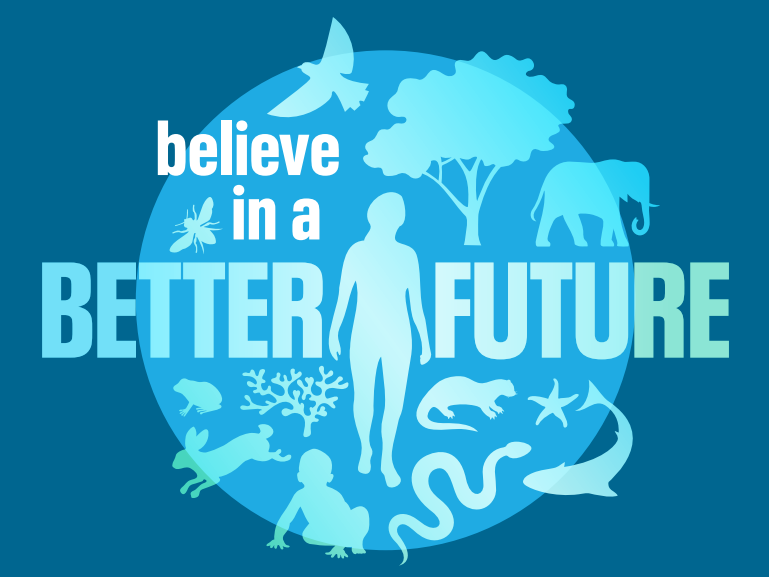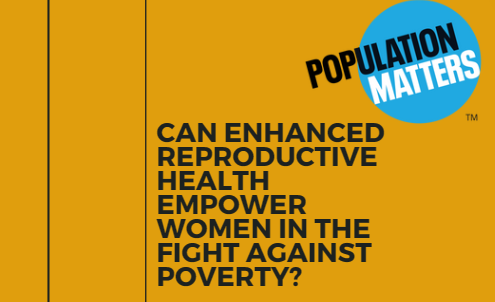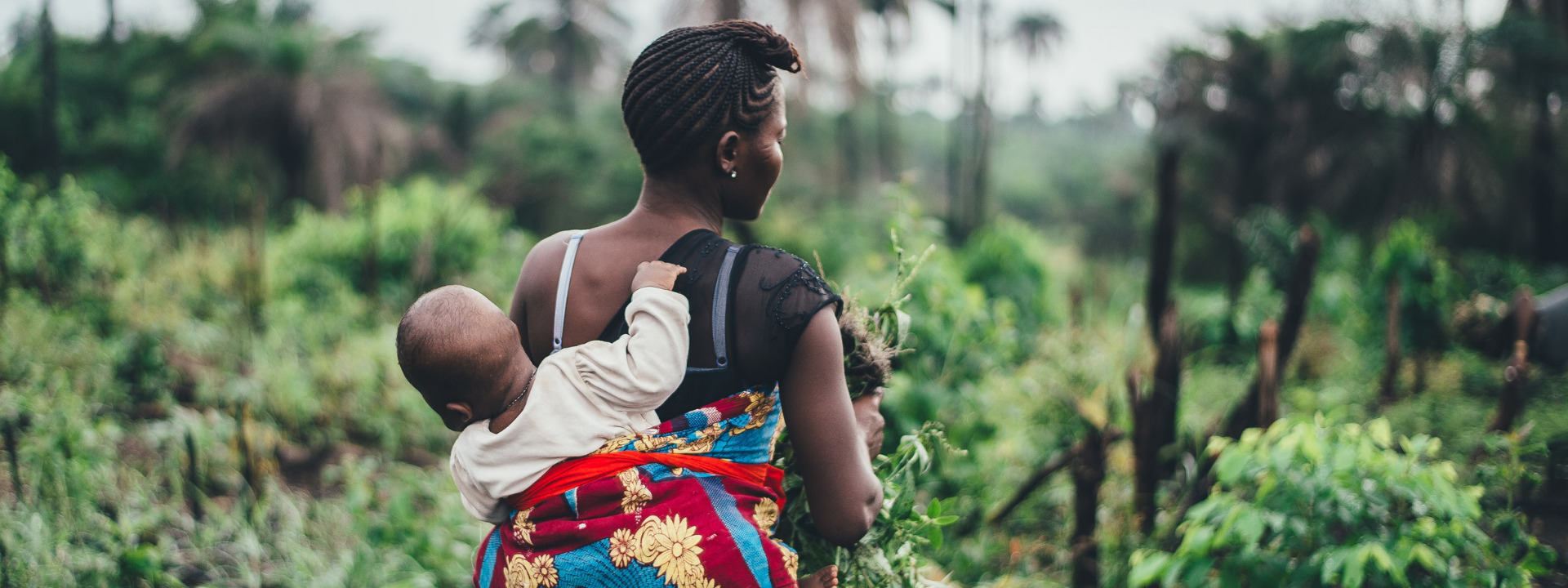
Breaking the Cycle of Poverty
Access to sexual and reproductive health, including family planning, plays a pivotal role in shaping population dynamics and breaking intergenerational cycles of poverty, according to the United Nations Population Fund (UNFPA). Florence Blondel, our Content and Campaigns Specialist, delves into the transformative impact of addressing the reproductive needs of young girls and women ahead of the Commission on the Status of Women (CSW68) next week.
Accelerating the achievement of gender equality and the empowerment of all women and girls by addressing poverty and strengthening institutions and financing with a gender perspective.”
THE CYCLE
Rapid population growth, high fertility, and gender inequality often go hand in hand.”
UNDESA
In regions experiencing rapid population growth, concentrated extreme poverty persists. Take Ethiopia, for instance, where despite a 14 percent reduction in poverty from 2011 to 2019, an upsurge in population has resulted in an additional two million individuals living in poverty. The UN Gender Snapshot paints a concerning picture, indicating that millions of girls and women in sub-Saharan Africa may face survival challenges on less than $2.15 a day. This alarming scenario perpetuates a cycle of poverty, restricted autonomy, and limited reproductive rights, significantly impacting the education, health, and overall gender equality of girls and women.
Globally, of the children of primary school age who never attend school, three-quarters are girls who are married off as children and start childbearing earlier and more frequently. High birth rates entail significant negative implications, particularly high maternal mortality and morbidity rates.
The coveted demographic dividend
Sustainable development hinges on greater efforts to advance gender equality and reproductive health services. Lower fertility rates resulting from these changes contribute to economic growth by fostering a demographic dividend. As families have fewer children, there is a decrease in dependency ratios—the proportion of non-working age individuals relative to the working-age population. This shift can result in a more substantial workforce relative to dependents, creating opportunities for increased productivity, savings, and investments (UNDESA, 2021).
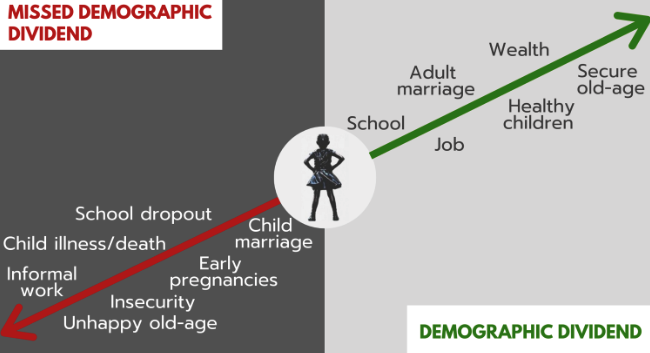
However, many countries in sub-Saharan Africa, whose population is expected to double from the current 1.1 billion by 2050, are still struggling to attain the demographic dividend. Niger, classified as an extremely low-income country by the World Bank, faces challenges in achieving stability. With the world’s lowest median age at 14.6 and the highest rate of child marriages at 76 percent, including around 5.1 million child brides before 18 years, of which 2.1 million occur before age 15, the country’s total fertility rate remains persistently high at 6.7 children per woman. Moreover, with an annual population growth rate of 3.5 percent, the population doubles every 18.5 years.
Lower fertility rates not only contribute to the demographic dividend but also address economic challenges faced by countries with high fertility rates. Smaller family sizes allow girls and women to take advantage of educational and economic opportunities that may otherwise not be available to them, leading in turn to greater economic activity.
However, realising the demographic dividend requires addressing barriers such as child marriage, teenage pregnancy, and limited access to education in many low-income countries.
THE CASE FOR EDUCATION AND FAMILY PLANNING
According to the World Bank, “limited educational opportunities for girls and barriers to completing 12 years of education cost countries between $15 trillion and $30 trillion dollars in lost lifetime productivity and earnings.”
No one doubts the value of empowering women through education, but when population grows this fast, countries are simply not able to sustain their development. And when education and health systems are overwhelmed or fail altogether, I can assure you that it is women and girls who suffer first and most.”
Dr Musimbi Kanyoro, former CEO, Global Fund for Women
A faster transition from high to lower fertility rates is essential and achievable through positive means that enhance freedom and opportunity for women and girls. It begins with access to effective family planning services but must also involve putting an end to other factors influencing high birth rates, many of which are rooted in patriarchy and other structures that sustain inequality. Several countries, such as South Korea, Bangladesh, Costa Rica, Morocco, Thailand, and others, have successfully undergone this transition, accomplishing it at a relatively low cost.

REPRODUCTIVE HEALTH GETS US THERE
Family Planning can bring more benefits to more people at less cost than any other technology now available to the human race!”
Jim Grant, former Executive Director of UNICEF, 1992
Despite the simplicity of this technology, funders have yet to catch up. The flagship FP2020 international partnership fell short of its aspiration to have 120 million more women using modern family planning between 2012 and 2020, achieving only half that number. Moreover, demand is rising.
In sub-Saharan Africa, for example, both population growth and changing preferences regarding family size are expected to contribute to a rapid increase in the total demand for family planning. Unless access is expanded rapidly in such settings, the availability of family planning services, including for modern methods of contraception, will continue to fall short of the projected demand.”
UNDESA, 2021
Evidence indicates that we can expedite the stabilisation of population growth by prioritising constructive solutions, including empowering women and enhancing access to family planning. Unfortunately, these crucial areas currently face resource shortages, and over 270 million women have an unmet need for family planning.
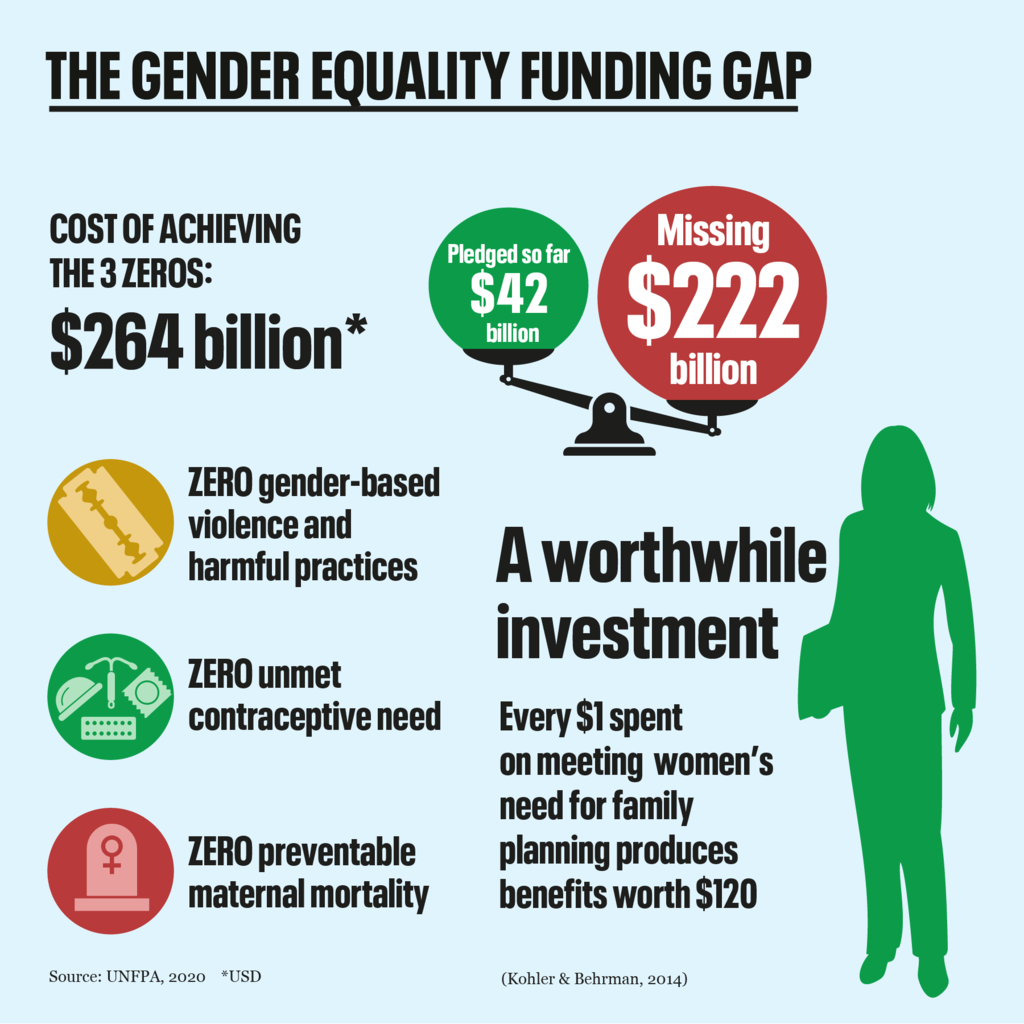
Over 100 million women and girls could be lifted out of poverty if governments prioritized education and family planning, fair and equal wages, and expanded social benefits.”
CSW68
WE will SHARE REPORTS on ALL THE ABOVE ISSUES AT CSW68
Recognising the vital significance of empowering young girls and women, promoting gender equality, and ending poverty through a fertility transition, Population Matters is participating in the 68th Commission on the Status of Women (CSW68) in New York City from the 11 to 22 March, 2024. It marks our first time at CSW, a global intergovernmental body dedicated to promoting gender equality and the empowerment of women.
PM will participate in various events at CSW68, including those from Girls Not Brides, of which we are honoured to be members. We have also officially joined as members of NGO CSW/NY, a coalition of NGOs, civil society organisations (CSOs), and individuals concerned with global gender equality and the rights and empowerment of women and girls.
In preparation for CSW68, in July 2023 alongside Population Balance, we submitted a written statement, titled, ‘Pronatalism: Sexual and Reproductive Health and Rights Violations in Iran’. Additionally, we submitted a response to the Universal Periodic Review of the Status of Women on Human Rights Violations titled, ‘Two-child policies in states of the Republic of India’.
We have attended a few events leading up to the main meeting and will share an independent report we launched, as well as a briefing with delegates at the UN Headquarters in New York. We aim to make connections during the meeting and promote our work.

